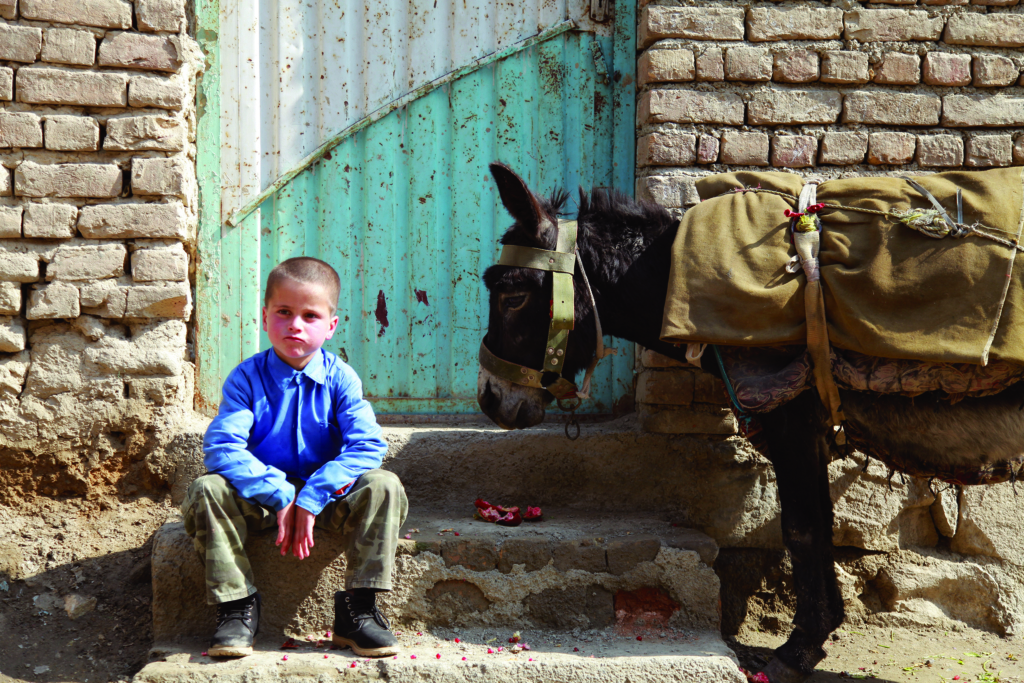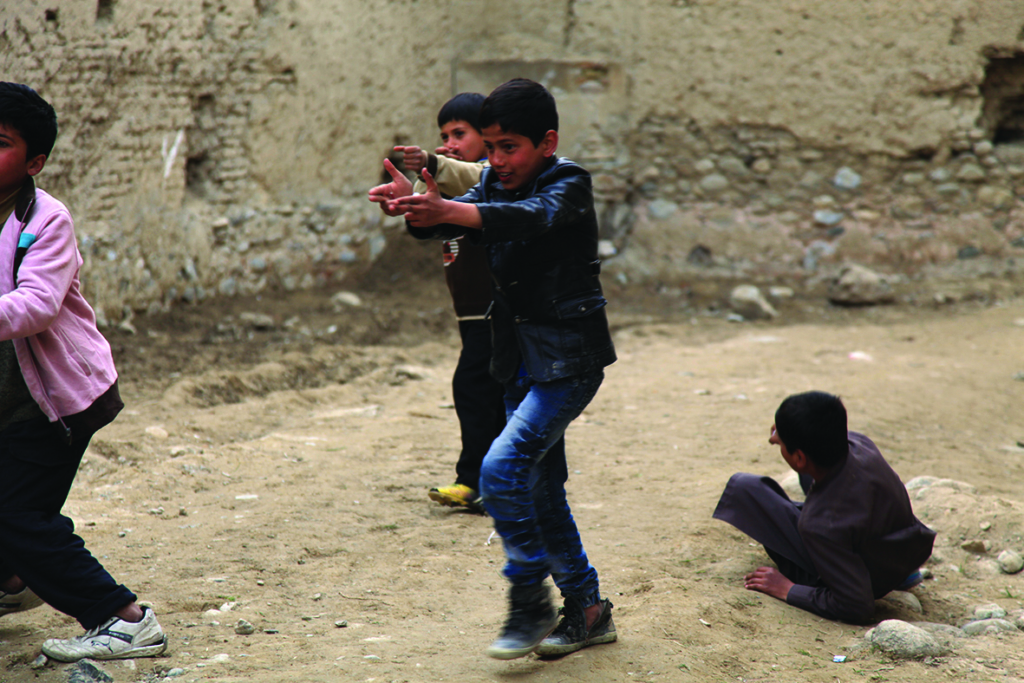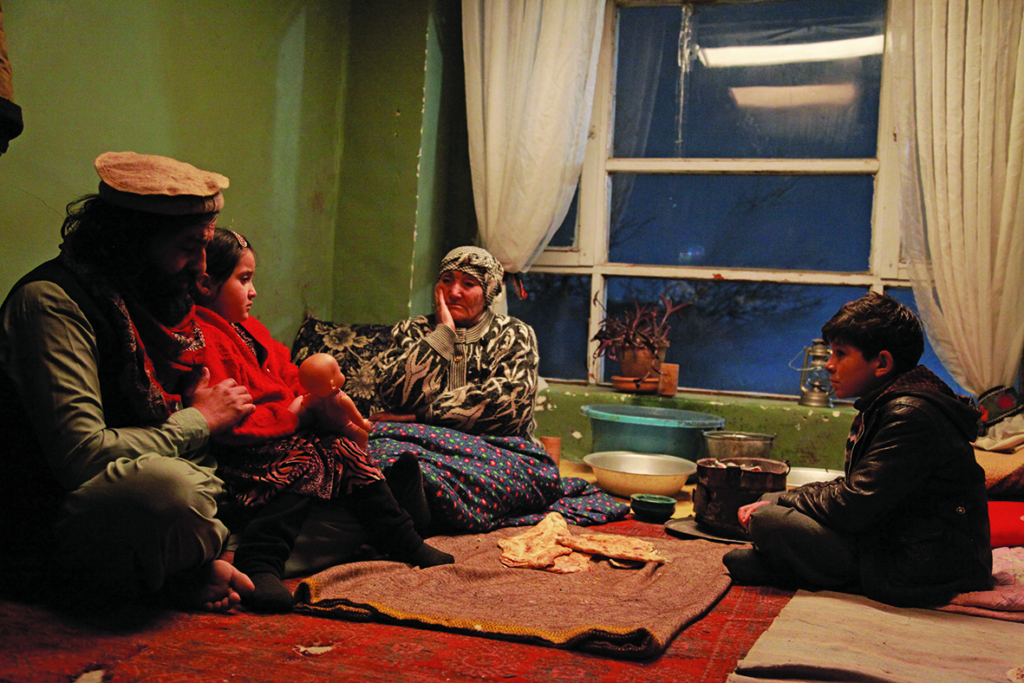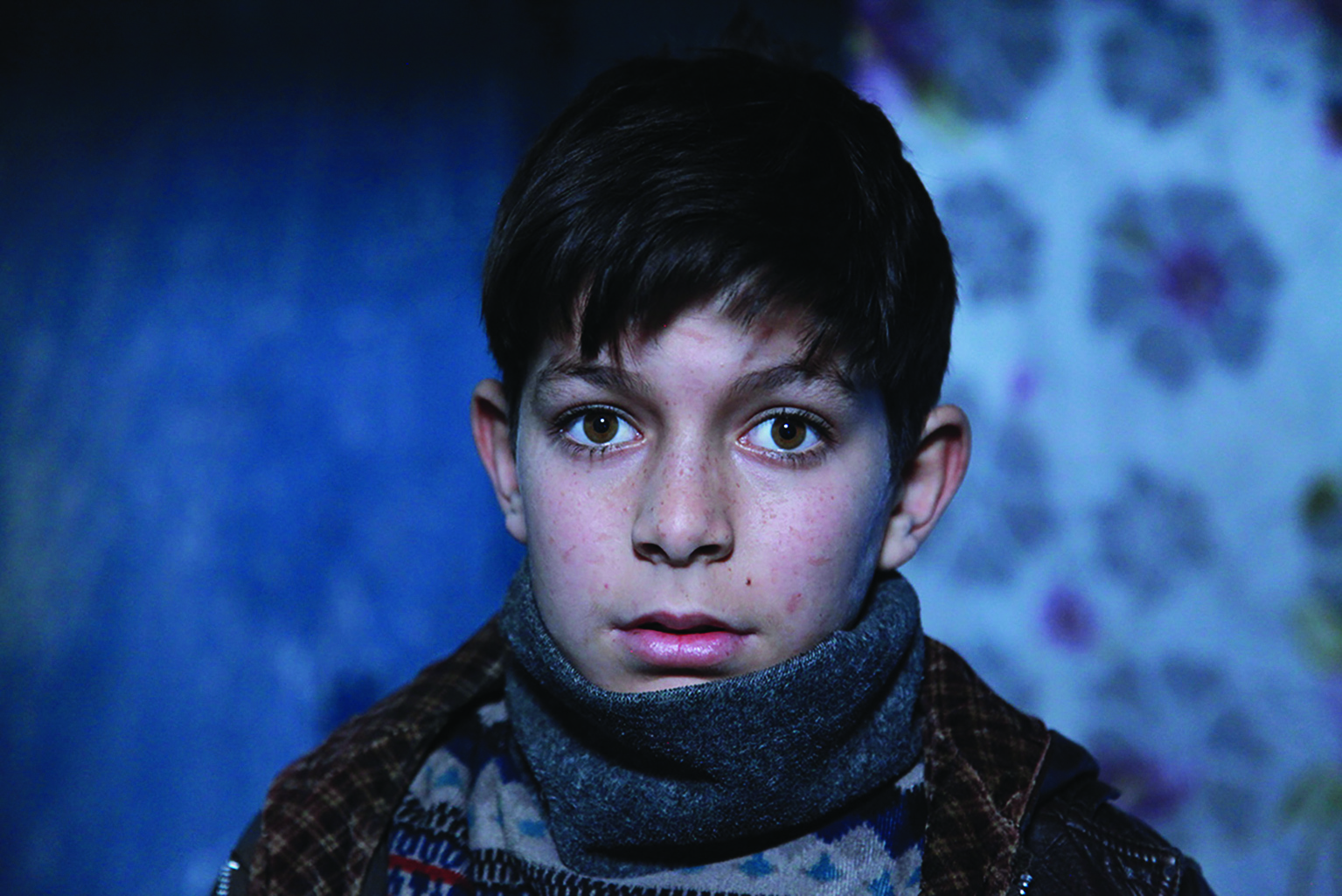On 15 October 2020, the day before the premiere of Granaz Moussavi’s feature film When Pomegranates Howl at the Adelaide Film Festival, the Australian Federal Police (AFP) dropped an investigation[1]‘Australia Police Drop Probe into Afghan “War Crimes” Reporting’, Al Jazeera, 15 October 2020, <https://www.aljazeera.com/news/2020/10/15/australia-police-drop-probe-into-afghan-war-crimes-reporting>, accessed 10 May 2021. into an ABC journalist who had revealed alleged war crimes by Australian special forces in Afghanistan, including the killing of unarmed men and children.[2]Dan Oakes & Sam Clark, ‘The Afghan Files’, ABC News, 11 July 2017, <https://www.abc.net.au/news/2017-07-11/killings-of-unarmed-afghans-by-australian-special-forces/8466642?nw=0>, accessed 10 May 2021.
This news emerged at a time of increasing scrutiny of the conduct of Australia’s armed forces in Afghanistan. Not long previously, journalist Paul Daley had written of the ‘potentially existential crisis’ facing the Australian Special Air Service Regiment (SASR) – a crisis that related to both the realities of the AFP investigation as well as its threat to broader cultural image of ‘the white-hatted Aussie-Anzac “digger”’.[3]Paul Daley, ‘Australia’s Special Forces Problem: Why the SAS Is Facing a Crisis’, The Guardian, 16 August 2020, <https://www.theguardian.com/australia-news/2020/aug/16/australias-special-forces-problem-why-the-sas-is-facing-a-crisis>, accessed 10 May 2021. Subsequently, on 19 November 2020, the Inspector-General of the Australian Defence Force Afghanistan Inquiry Report recommended that, in the words of a contemporaneous news article, ‘19 soldiers be investigated by police for the “murder” of 39 prisoners and civilians, and the cruel treatment of two others’.[4]Matthew Doran, ‘Afghanistan War Crimes Report Released by Defence Chief Angus Campbell Includes Evidence of 39 Murders by Special Forces’, ABC News, 19 November 2020, <https://www.abc.net.au/news/2020-11-19/afghanistan-war-crimes-report-igadf-paul-brereton-released/12896234>; see also Commonwealth of Australia, ‘Inspector-General of the Australian Defence Force: Afghanistan Inquiry Report’, 2020, <https://afghanistaninquiry.defence.gov.au/sites/default/files/2020-11/IGADF-Afghanistan-Inquiry-Public-Release-Version.pdf>, both accessed 10 May 2021. Australian Defence Force chief Angus Campbell apologised for ‘any wrongdoing by Australian soldiers’, with particular focus on acts committed by SASR members.[5]Angus Campbell, quoted in Doran, ibid.

While When Pomegranates Howl may not be about these specific incidents or directly depict any Australian soldiers, reflections on the impact of military intervention do not need to be restricted to formal reports – and the context surrounding the film’s release is vital for understanding its immediate and ongoing relevance, both globally and in Australia. Though primarily focused on the lives of Afghan children, and with only one identifiably Australian character, Moussavi’s film is, among other things, a reminder of the connectedness of these two countries through our military history in the region. Just as this history has been largely invisible in Australia’s cultural consciousness, this same near invisibility defines much of the Australian presence within Moussavi’s film. We are lured into feeling like it’s simply a background to the unfolding story – until suddenly, without warning, it’s right there in front of us.
The film follows nine-year-old[6]While most of the film’s press material lists Hewad as nine years old, Moussavi has referred to Hewad as ten years old in an interview on the ABC radio program The Drawing Room; see ‘When Pomegranates Howl’, The Drawing Room, Radio National, 12 October 2020, <https://www.abc.net.au/radionational/programs/drawingroom/when-pomegranates-howl/12758782>, accessed 10 May 2021. Hewad (Arafat Faiz) through the streets of Kabul. He is not fully cognisant of the ongoing threat of violence in his city, and, focusing on the boy’s unstructured days, Moussavi doesn’t place too much direct emphasis on it either for most of the film. These city streets, as presented by Moussavi (and described recently by journalist Shadi Khan Saif as ‘a chaos of unlicensed markets’[7]Shadi Khan Saif, ‘Kabul Evicts Street Vendors in “Discipline” Drive’, Reuters, 23 October 2020, <https://www.reuters.com/article/us-afghanistan-landrights-eviction/kabul-evicts-street-vendors-in-discipline-drive-idUSKBN2772II>, accessed 10 May 2021.), are places of commerce: costs, debts and territorial disputes underlie most of Hewad’s activities as he wheels a pushcart around to bring in an income for his family. His brother and father have both been ‘martyred’ – the casual use of the term by various characters suggesting an uncomfortable familiarity with the concept (if not regularity). This familiarity is also seen in Hewad’s general demeanour; caught, at one point, near an explosion, his main concern is that his family doesn’t find out about it.

Moussavi initially keeps us focused on Hewad’s practical concerns: negotiating the use of pushcarts, trying to keep his costs down and heaving his unwieldy cart up steep paved hills. The cart itself is sparsely decorated with remnants of US culture: a small, faded flyer for the Arnold Schwarzenegger film Eraser (Chuck Russell, 1996) flaps limply on one of its posts. When pomegranates roll innocuously from his cart to the ground, he’s careful to pick them up – a simple and perhaps obvious detail, but one that highlights again the theme of cost and value in Hewad’s activities.
The film’s focus on Hewad’s vitality throughout these scenes helps to draw the audience almost naively into this environment; for much of its running time, viewers may accordingly let their guard down. As is done in many of the best films about youth, Moussavi attempts to capture the immediacy of childhood with both seriousness and a wry sense of play, just as the preoccupations of childhood are so often themselves a combination of sincerity and performance.
Hewad’s childhood is, nevertheless, a difficult one. In a trailer for Vittorio De Sica’s Miracle in Milan (1951), it’s noted that ‘in life, only humble and simple people suffer – mainly children who often have to face things bigger than themselves’.[8]Miracle in Milan trailer, Miracle in Milan Blu-ray, Arrow Films, 2012. Hewad certainly fits into this category of cinematic children whose tough realities are frequently negotiated through aspirational fantasy (in Moussavi’s 2009 film My Tehran for Sale, a child who says that she’s not scared is calmly told, ‘You’ll be scared when you get older’). Hewad’s reality is one of financial necessity and familial responsibility, so it’s no surprise that his fantasies are largely financial and familial as well: he imagines becoming a film star and buying a large house with many floors for himself, his family and his wife (even if this final element is at this point a somewhat abstract concept for him).
Whether Hewad fits the description of ‘humble and simple’ is another matter, though. Canny and alert, he soon leverages his fantasy of stardom into financial exploitation of the children around him by pretending to have the ability to cast them in movie roles. Bravado is, to him, a suitable replacement for truth – and for many of these young people, Hewad is himself elevated to something of a fantasy figure. His compression of acting to the binary of ‘laughing’ and ‘crying’ allows for some wonderfully simple yet engaging ‘audition’ performances from the children, while also demonstrating the pithy insights a childhood perspective can sometimes produce.

Hewad’s financial endeavours are developed through a capitalistic lens, simultaneously predatory and vivacious; it’s easy to be swept away by his audacity, to be immersed in the fantasy that the other children are willing to pay for. As with much of Hewad’s world, his racket can also be viewed as a small-scale mirror of real-world international politics in its mixture of showmanship, expropriation and self-perpetuating lack of restraint. Throughout the film, Hewad’s childhood being manifests itself not according to some ideal of youthful innocence, but instead through his easy immersion into the absence of innocence in his surrounding environment – and, in turn, that surrounding world is inscribed into Hewad’s own existence. He is simultaneously naive and highly ideological, easily manifesting the conflicts around him in his play and worldview (Jennifer Jason Leigh’s Susie Waggoner in George Armitage’s 1990 crime comedy Miami Blues is perhaps a similar example of this ‘innocent’ figure of absolute ideology, with her entirely good-natured expectation that her own future stability will be aided by hiring low-paid teenage workers). As philosopher Slavoj Žižek says of ideology and fantasy in The Pervert’s Guide to Cinema (Sophie Fiennes, 2006), ‘We need the excuse of a fiction to stage what we truly are.’[9]For further context, see Colin Marshall, ‘Slavoj Žižek Explains the Artistry of Andrei Tarkovsky’s Films: Solaris, Stalker & More’, Open Culture, 27 June 2016, <https://www.openculture.com/2016/06/slavoj-zizek-breaks-down-the-artistry-of-andrei-tarkovskys-films.html>, accessed 10 May 2021. Similarly, it’s Hewad’s fantasy play that directly portrays and reveals much of his, the film’s and our own reality.
Like the limply flapping flyer for Eraser on Hewad’s cart, fragments of US culture appear regularly throughout this representation of Kabul. Popping up as logos and trademarks, they remind the viewer of the underlying presence of US commercial culture (echoing anthropologist Christopher A Howard’s observation that many travellers with the tourist’s fantasy of ‘authenticity and the seduction of difference’ are ultimately forced to encounter the ‘late capitalist conditions that make encounters with the Other and global mobility possible’, destabilising a pursuit of ‘authenticity’ that is really ‘an attempt by the West to reconcile its own sense of fractured identity and destructiveness’[10]Christopher A Howard, ‘Touring the Consumption of the Other: Imaginaries of Authenticity in the Himalayas and Beyond’, Journal of Consumer Culture, vol. 16, no. 2, 2016, pp. 354–5.). This is still, however, a negotiation: the children may be firmly familiar with the conventions of American blockbuster movies and base much of their play and fantasy around those structures, but this influence is combined with those of more immediate artistic and cultural connections. For instance, one of Hewad’s affable friends has a more locally accessible fantasy of success and artistry in mind, leading to a short but engaging musical performance (one that continues the preoccupation with art and performance in My Tehran for Sale).
While this focus on childhood experience is so successful that it may lure viewers into the nostalgic trap of idealising suffering and deprivation as a form of ‘authenticity’, Moussavi has no intention of pandering to this type of self-indulgent reverie.
While this focus on childhood experience is so successful that it may lure viewers into the nostalgic trap of idealising suffering and deprivation as a form of ‘authenticity’ – for example, the cliché of witnessing a child’s joy at receiving a new pair of sneakers[11]Shoes seem to be a regular symbol of a ‘legitimate’ object of desire for the poor – in Miracle in Milan, desire for a pair of shoes is presented as being especially simple and sincere, and is also the key wish that fails to be fully granted. – Moussavi has no intention of pandering to this type of self-indulgent reverie. If we’re alert to Hewad’s world, we should perhaps still be thinking of the disparity between the cost to the buyer and value for the receiver of those gifted sneakers, and of the other transactions of that nature taking place around him.
Australia’s presence in this environment is primarily represented by an unnamed photojournalist (played by Andrew Quilty, himself a multiple Walkley Award–winning photojournalist based in Kabul), who is portrayed as something of a fantasy figure – as, to Hewad, he inevitably is. The interactions between the pair hint at a common type of narrative about the capacity for mutual emotional growth through personal international connections; almost predictably well intentioned, Quilty’s character is likely to serve as a point of identification for many Australian viewers, who may recognise his relative privilege, as well as his desire to use that privilege in vague ways to engage positively with a child in difficult circumstances. Nonetheless, Moussavi ensures such sympathies and saviour fantasies do not become the focal point of the film; indeed, the photojournalist’s penultimate scene offers no space for heroism.

Following this intense sequence, the final shot of the photojournalist is somewhat surprising in its composition, allowing the character a carefully composed moment of impotent rage and despair. In it, he is silhouetted a little too perfectly against a stunning background – the type of routinely ‘cinematic’ composition that appears in places like the ‘One Perfect Shot’ Twitter account[12]See <https://twitter.com/OnePerfectShot>, accessed 10 May 2021. – in contrast to the less ostentatious outdoor locations seen in the rest of the film (the moment also resembles a similar, although more visceral and smoothly incorporated, scene in My Tehran for Sale). This potentially softens the blow of his previous scene and, perhaps, also the sense of discomfort that it may have brought to the aforementioned audience. The powerlessness of our individuality in the realm of global politics may suggest despair, but its reaffirmation can also act as a type of consolation. As such, the direct rejection of the relevance of the Australian character’s sympathy that precedes this final shot perhaps would have made for a more potent and challenging finale.
Just as Hewad’s daily life is one of cost and negotiation, so his life becomes subject to such forces. As the film’s closing credits begin, they are interrupted to show an excerpt from an interview with then–defence minister Stephen Smith discussing a real-life event involving Australian forces.[13]For the full interview, see ‘Australian Defence Force Apologises for Afghanistan Deaths’, 7.30, 5 March 2013, <https://www.abc.net.au/7.30/australian-defence-force-apologises-for/4554616>, accessed 10 May 2021. Far from a post-credits gimmick, this excerpt connects directly to Moussavi’s key themes in When Pomegranates Howl, encouraging Australian audiences to consider the real impact of what they’ve seen throughout the film and how it might be comparatively framed by a government in an international context. This juxtaposition is a precise and careful combination of pathos and blunt political statement that gives the film its parting jolt, and a tactic that uses art to communicate in ways that more direct media ruminations on the nature of the Australian military cannot.
For much of its running time, it can seem like When Pomegranates Howl is focused not so much on international politics as it is on childhood. Perhaps, more accurately, the film is focused on the idea that childhood can never be removed from international politics, and that childhood fantasy itself cannot be disentangled from ideological backgrounds. While portrayals of childhood can often be presented or understood as a type of universal experience – we were all children once – Moussavi doesn’t let us find comfort in that simple pleasantry. The experience of childhood cannot exist untouched by the realities of political immediacies, even if children themselves may be unaware of the scope of those realities. Nor can Australian audiences ignore the reality of Australia’s presence in the world. Moussavi’s film and Faiz’s performance within it lure us into the sense of a shared universality, a recognisable and desirable state of childhood fantasy, only to remind us that such things can never be removed from the realities of war, power, politics and commerce that surround them.
Endnotes
| 1 | ‘Australia Police Drop Probe into Afghan “War Crimes” Reporting’, Al Jazeera, 15 October 2020, <https://www.aljazeera.com/news/2020/10/15/australia-police-drop-probe-into-afghan-war-crimes-reporting>, accessed 10 May 2021. |
|---|---|
| 2 | Dan Oakes & Sam Clark, ‘The Afghan Files’, ABC News, 11 July 2017, <https://www.abc.net.au/news/2017-07-11/killings-of-unarmed-afghans-by-australian-special-forces/8466642?nw=0>, accessed 10 May 2021. |
| 3 | Paul Daley, ‘Australia’s Special Forces Problem: Why the SAS Is Facing a Crisis’, The Guardian, 16 August 2020, <https://www.theguardian.com/australia-news/2020/aug/16/australias-special-forces-problem-why-the-sas-is-facing-a-crisis>, accessed 10 May 2021. |
| 4 | Matthew Doran, ‘Afghanistan War Crimes Report Released by Defence Chief Angus Campbell Includes Evidence of 39 Murders by Special Forces’, ABC News, 19 November 2020, <https://www.abc.net.au/news/2020-11-19/afghanistan-war-crimes-report-igadf-paul-brereton-released/12896234>; see also Commonwealth of Australia, ‘Inspector-General of the Australian Defence Force: Afghanistan Inquiry Report’, 2020, <https://afghanistaninquiry.defence.gov.au/sites/default/files/2020-11/IGADF-Afghanistan-Inquiry-Public-Release-Version.pdf>, both accessed 10 May 2021. |
| 5 | Angus Campbell, quoted in Doran, ibid. |
| 6 | While most of the film’s press material lists Hewad as nine years old, Moussavi has referred to Hewad as ten years old in an interview on the ABC radio program The Drawing Room; see ‘When Pomegranates Howl’, The Drawing Room, Radio National, 12 October 2020, <https://www.abc.net.au/radionational/programs/drawingroom/when-pomegranates-howl/12758782>, accessed 10 May 2021. |
| 7 | Shadi Khan Saif, ‘Kabul Evicts Street Vendors in “Discipline” Drive’, Reuters, 23 October 2020, <https://www.reuters.com/article/us-afghanistan-landrights-eviction/kabul-evicts-street-vendors-in-discipline-drive-idUSKBN2772II>, accessed 10 May 2021. |
| 8 | Miracle in Milan trailer, Miracle in Milan Blu-ray, Arrow Films, 2012. |
| 9 | For further context, see Colin Marshall, ‘Slavoj Žižek Explains the Artistry of Andrei Tarkovsky’s Films: Solaris, Stalker & More’, Open Culture, 27 June 2016, <https://www.openculture.com/2016/06/slavoj-zizek-breaks-down-the-artistry-of-andrei-tarkovskys-films.html>, accessed 10 May 2021. |
| 10 | Christopher A Howard, ‘Touring the Consumption of the Other: Imaginaries of Authenticity in the Himalayas and Beyond’, Journal of Consumer Culture, vol. 16, no. 2, 2016, pp. 354–5. |
| 11 | Shoes seem to be a regular symbol of a ‘legitimate’ object of desire for the poor – in Miracle in Milan, desire for a pair of shoes is presented as being especially simple and sincere, and is also the key wish that fails to be fully granted. |
| 12 | See <https://twitter.com/OnePerfectShot>, accessed 10 May 2021. |
| 13 | For the full interview, see ‘Australian Defence Force Apologises for Afghanistan Deaths’, 7.30, 5 March 2013, <https://www.abc.net.au/7.30/australian-defence-force-apologises-for/4554616>, accessed 10 May 2021. |





